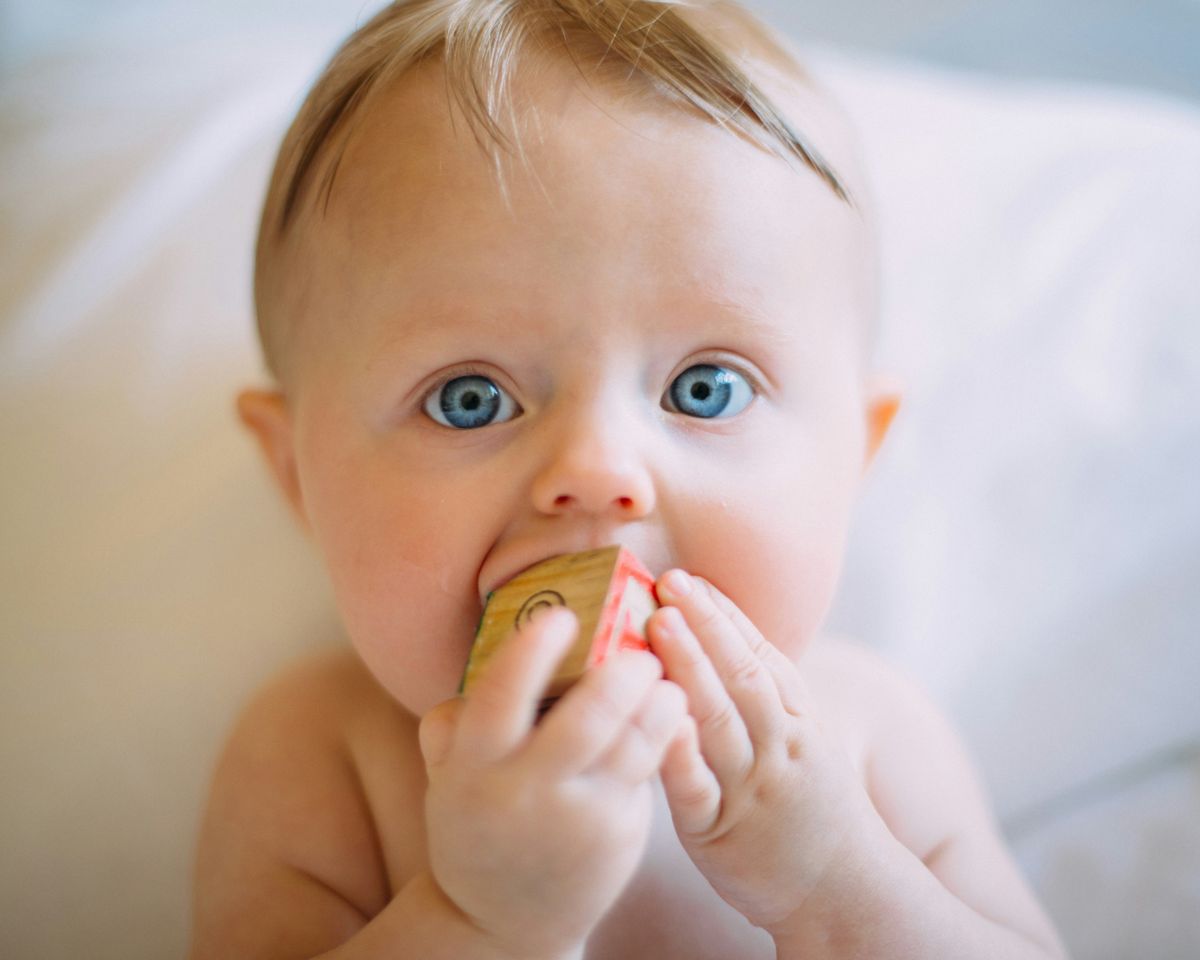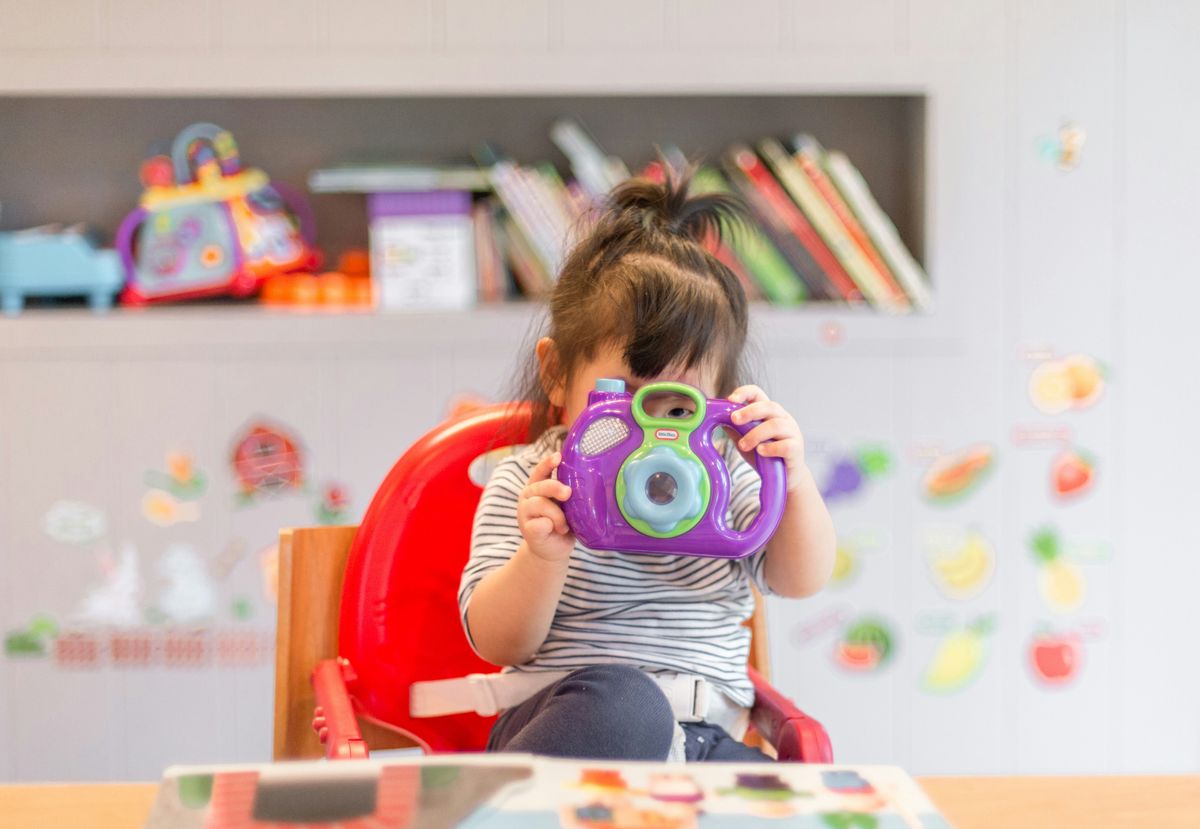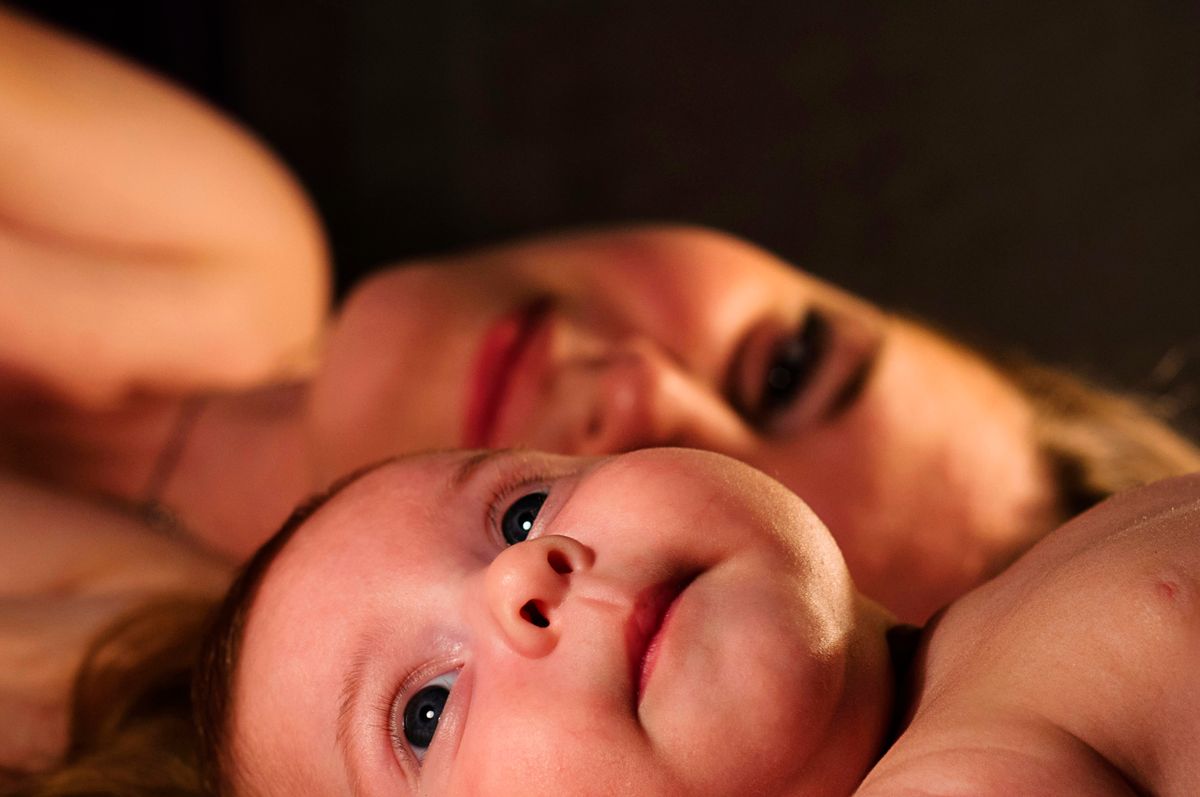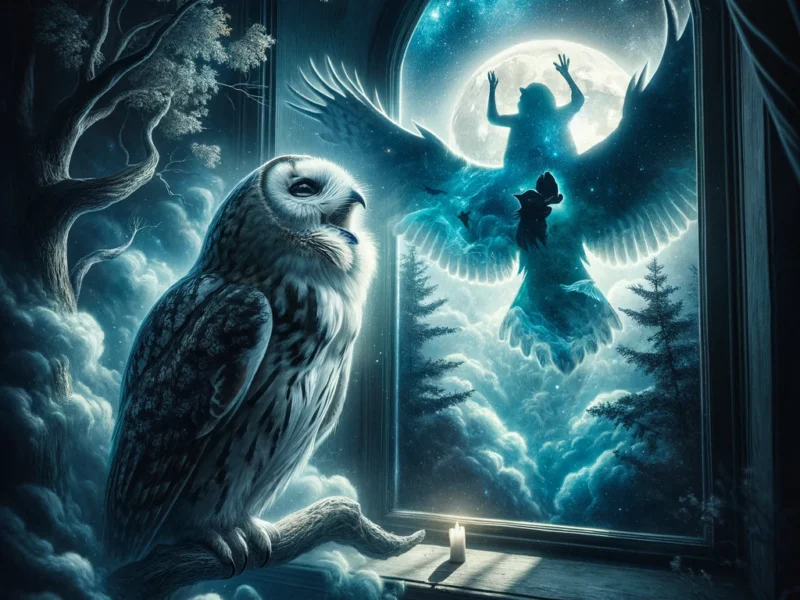Throughout history, the sound of a baby's cry has carried more than just an alert to immediate needs; it has resonated with deep mystical and symbolic meanings. Our ancestors looked to infant cries as whispers from the cosmos, interpreting them through the lenses of astrology, religion, and psychology. This article delves into the ancient and enduring interpretations of a baby's tears, exploring how these beliefs have shaped cultural narratives and reflected the human condition.
Key Takeaways
- Ancient astrological beliefs posited that a baby's soul is marked by the stars at birth, influencing its destiny and sensitivity to cosmic patterns.
- In Christian tradition, myrrh symbolizes the mortality of an infant, foretelling the death of Jesus and reflecting the sorrow embedded in the human life cycle.
- The Terrible Mother archetype in myth and fairy tales represents the dark, unconscious fears associated with femininity and the psychological depths of the maternal role.
- Fairy tales and myths serve as mirrors to the human psyche, with infant cries often symbolizing the dualities of life and the constancy of emotional archetypes.
- Cultural interpretations of baby cries vary widely, yet they commonly influence rituals, stories, and the collective unconscious, shaping our understanding of life's beginnings.
Whispers from the Cradle: Ancient Interpretations of Infant Cries

Stargazing and Soul Marking: Astrological Beliefs
Imagine you're an ancient observer, gazing up at the night sky, tracing the constellations, and seeking answers in the stars. Astrology was the lens through which our ancestors viewed the cosmos, and through it, they sought to understand the cries of a newborn. To them, a baby's cry wasn't just a signal of hunger or discomfort; it was a celestial whisper, a soul marking its entry into the world.
- Aries: A cry of leadership and courage
- Taurus: A steadfast and comforting wail
- Gemini: Dual tones of curiosity and communication
- Cancer: A sensitive and nurturing sob
- Leo: A proud and attention-seeking howl
- Virgo: A meticulous and analytical whimper
- Libra: A cry for harmony and balance
- Scorpio: A deep and transformative cry
- Sagittarius: An adventurous and exploratory yelp
- Capricorn: A disciplined and ambitious cry
- Aquarius: An innovative and unique cry
- Pisces: A compassionate and empathetic weep
In the tapestry of the night, each starry point was a note in the symphony of fate, and a baby's cry echoed the music of the spheres. The belief that these cries held significant symbolism, representing purity, innocence, and the unfiltered expression of emotions, was deeply ingrained in the cultural consciousness.
This ancient practice of astrology, often dismissed as superstition, was a sophisticated form of storytelling and meaning-making. It connected the microcosm of human life with the macrocosm of the universe, suggesting that the stars held the keys to understanding our very existence.
The Myrrh Connection: From Birth to Mortality
Imagine you're back in ancient times, where every gift had a meaning, and every symbol told a story. You've probably heard about the three wise men and their gifts of gold, frankincense, and myrrh. But did you know that myrrh, often used as anointing oil, was also a symbol of mortality? That's right, it was a poignant reminder that even in the cradle of life, the shadow of death looms.
In the Christian tradition, myrrh is a bittersweet emblem. It foreshadows the death of the infant Jesus, who, as a grown man, would be offered wine mixed with myrrh during his crucifixion. This connection between birth and death is not just a tale of sorrow; it's a profound reflection on the cycle of life.
The gifts of the magi were not just valuable items; they were laden with deep symbolic significance. Each one, especially myrrh, was a narrative in itself, intertwining with the destiny of the newborn.
The magi themselves, often seen as paragons of faith, traveled from distant lands to honor the child. Their journey and the gifts they brought encapsulate the ancient practice of offering tributes to kings or deities. Here's a quick rundown of what each gift represented:
- Gold: The precious metal signifying kingship and wealth.
- Frankincense: The incense used for worship and prayer.
- Myrrh: The anointing oil, a symbol of death and mortality.
So next time you see a nativity scene or hear the Christmas story, take a moment to ponder the rich tapestry of meanings behind those tiny tears and the gifts that foretold a destiny.
The Terrible Mother: Unconscious Fears and Femininity
You've stumbled upon the darker corridors of the maternal archetype, where the nurturing mother's embrace twists into a suffocating clutch. The Terrible Mother lurks in the shadows of the unconscious, a symbol not of the world outside but of the inner psyche's nightmarish depths. She's the chilling whisper in the dark, the cold hand that grips the heart in dreams.
- The Terrible Mother is a symbol of the unconscious.
- She manifests as the monster and nightmarish figure.
- Represents the dark, abysmal side of life and the human psyche.
In the grip of the Terrible Mother, we confront our deepest fears and the stark reality of our vulnerability. Here, the maternal figure is not just a source of life but also a representation of death and destruction.
It's a paradoxical dance between the need for maternal comfort and the terror of being consumed by it. The Devouring Mother archetype, a stark contrast to the nurturing Great Mother, embodies this tension. She is the nightmare that warns of regression, yet also the challenge that spurs progression towards greater consciousness.
Tales of Tears: The Role of Crying in Myth and Fairy Tale

The Psychology of Fairy Tales: Reflecting the Human Psyche
Imagine you're curled up in your favorite nook, the world outside fades away as you're whisked into a realm where every character, every twist of fate, and every magical spell speaks directly to the core of who you are. Fairy tales are more than just bedtime stories; they are a mirror to the deepest parts of our psyche.
These tales, passed down through generations, are not just for entertainment. They serve as a guide, reflecting our dreams, fears, and the universal quest for meaning. The characters and their journeys often symbolize the exploration of dreams in spiritual and psychological realms, emphasizing their significance in personal growth and community support.
- The hero's journey reflects our life challenges.
- Wicked witches and benevolent fairies represent the duality within us.
- Enchanted objects can symbolize personal talents or burdens.
In the simplicity of these stories lies the complexity of the human condition.
As you delve deeper, you'll find that these narratives are steeped in the collective unconscious, a concept introduced by Carl Jung. They tap into archetypes that resonate across cultures, suggesting a shared heritage of the subconscious mind. It's a fascinating thought, isn't it? That the tales told to lull children to sleep are actually profound commentaries on the human experience.
From Joy to Sorrow: The Dichotomy of Life in Ancient Texts
Imagine you're flipping through the pages of history, where the ink of ancient scribes captures the essence of human experience. The dichotomy of joy and sorrow is as old as time, etched into the very fabric of our ancestors' tales. These stories, rich with emotional depth, served as a mirror to the soul, reflecting the complexities of life's journey.
- The wise and the foolish, a recurring theme, highlighted the consequences of one's actions.
- Parables and proverbs, succinct yet profound, offered guidance and wisdom.
- The cycle of oppression and liberation, a narrative of hope amidst despair.
In the dance of life, every tear shed by a newborn was a step in the eternal rhythm of joy and sorrow.
The ancient texts were not just stories; they were life lessons wrapped in metaphor. A true knot in umbilical cord could signify more than a medical anomaly; it was a symbol of life's unpredictable nature, a spiritual sign for some, woven into the fabric of cultural beliefs.
Archetypal Patterns: The Consistency of Emotional Symbols
You've probably noticed how certain themes seem to pop up no matter where you look. From the myths of ancient Greece to the folk tales of Native America, there's a thread that connects them all. These are the archetypes, the deep-seated blueprints of our collective psyche that shape the stories we tell and the emotions we attach to them.
Consider the Wise Old Man, a figure that appears as a guiding mentor in countless narratives. Or the universal symbol of the mother, representing nurturing and protection. These figures aren't just random; they're part of a larger pattern that resonates with us on a subconscious level.
- Wise Old Man: The mentor archetype
- The Mother: Nurturing and protection
- The Child: Innocence and potential
- The Shadow: Our darker self
These archetypes are like the bassline of a great song, often unheard but fundamentally shaping the melody of our tales. And when you hear a baby cry, it's like a primal call that tugs at these archetypal strings. It's a sound that's been interpreted in myriad ways, but always seems to evoke a deep emotional response.
In your journey through life, you'll encounter these patterns time and again. They're not just relics of the past; they're living, breathing aspects of our inner world, shaping our perceptions and experiences.
The Crying Conundrum: Deciphering the Language of Newborns

Beyond the Wail: Understanding the Needs Behind Cries
Imagine you're deciphering a secret code, where every whimper and wail is a clue to what your baby needs. It's not just noise; it's a language waiting to be understood. A baby's cry due to a full diaper can vary, but it often involves signs of physical discomfort. The baby may squirm, kick more vigorously, or have a grimacing expression.
Babies communicate their needs in the only way they can, through cries that can signal anything from hunger to a desire for attention.
Understanding these signals is crucial for nurturing and responding appropriately. Here's a simple guide to help you decode the messages behind the tears:
- Hunger Cry: Starts softly and builds in volume, often accompanied by lip-smacking or rooting.
- Sleepy Cry: Whiny and nasal, it may come with yawns or eye-rubs.
- Discomfort Cry: Fussy, continuous, and may include physical signs like squirming.
- Overstimulation Cry: Sudden and intense, often following busy periods.
Remember, each baby is unique, and learning their specific cues takes time and patience. But with careful observation, you'll soon start to notice patterns and be able to respond to your baby's needs with confidence.
The Cultural Overlay: How Interpretations Differ Across Societies
Imagine you're cradling a newborn, their cries echoing softly in the room. Now, picture this scene across different cultures, and you'll find the meaning of those cries transforms. Interpretation, however, has to be practiced; it's not just about what the baby needs, but also about what each society hears in those wails. In some places, a baby's cry might be seen as a call to spiritual awakening, a reminder to explore the spiritual significance of dreams and the whispers of the subconscious.
- In Western societies, crying is often viewed as a sign of immediate physical need or discomfort.
- Contrastingly, in certain African cultures, infant cries might be interpreted as ancestral communication.
- Asian traditions sometimes consider a baby's cry as a sign of good health and strong lungs.
Each interpretation is a thread in the fabric of that society's narrative, woven with beliefs and values that have been passed down through generations.
Remember, the way we perceive a baby's cry is deeply embedded in our cultural tapestry. It's a blend of history, social norms, and collective consciousness that shapes our understanding. So the next time you hear a baby cry, listen closely. What you hear might just be a reflection of your own cultural lens.
The Dark and Terrible Mother: Exploring the Depths of Maternal Archetypes
Imagine peering into the cradle of human consciousness, where the nurturing embrace of the Great Mother archetype coexists with its shadow, the Terrible Mother. This duality encapsulates the nurturing and destructive forces of femininity, a theme echoed across countless myths and tales. The Terrible Mother is not just a figure of fear; she embodies the unconscious, the dark side of the maternal instinct that can manifest as monsters and nightmares.
The Terrible Mother archetype is a profound symbol, representing the darker aspects of the feminine psyche. It's a universal pattern, one that resonates deeply within our collective subconscious.
This archetype is not merely a relic of ancient stories; it continues to influence our modern narratives and psychological understanding. Consider the following points that illustrate the pervasive nature of this archetype:
- The Terrible Mother is often associated with nature's destructive forces, such as storms or droughts, symbolizing the unpredictable and sometimes harsh aspects of life.
- In personal development, she represents the challenges and fears one must overcome to achieve growth.
- She can also symbolize the societal pressures and expectations placed upon women, reflecting the complex interplay between individual identity and cultural norms.
From Lullabies to Lore: How Baby's Tears Shape Cultural Narratives

Rituals and Stories: The Ceremonial Role of Infant Cries
Imagine you're part of a community where every wail of a newborn isn't just a call for attention, but a sacred echo resonating through generations. Babies' cries have been more than just sounds; they're a ceremonial staple, a bridge connecting the present to the ancestral past. Rituals, you see, are the threads that weave the fabric of a society together, and infant cries often pull at these threads in the most profound ways.
- Provide a safe space: Rituals create a dedicated space for mourners to openly express their grief through crying, wailing, singing, or specific actions.
- Sense of connectedness: Repeated rituals over time bind us to our historical ancestors, fostering a deep sense of belonging.
- Alignment of consciousness: Through rituals, individuals seek to harmonize their conscious and unconscious, often guided by the innocent cries of infants.
In the soft murmurs and loud sobs of a baby, there's a language that speaks to the soul, urging communities to gather, reflect, and sometimes, to heal.
Whether it's a baptism or a naming ceremony, the first cries of a child often mark the commencement of these rituals. They're not just milestones in a child's life but are communal events that reaffirm shared beliefs and values. So next time you hear a baby's cry, remember, it might just be the universe's way of telling a story, one that's been told for millennia, in a voice that's pure and unadulterated.
The Evolution of Fairy Tales: Adapting Archetypes to Modern Times
Imagine you're flipping through the pages of an old, dusty fairy tale book. You're met with familiar characters: the hero, the maiden, the wise old man. These figures have been with us for centuries, etched into our collective consciousness. But as you turn the pages, you notice something different. The stories have morphed, shedding some of their darker elements to suit modern tastes.
- The hero may now show vulnerability, reflecting our current understanding of strength and resilience.
- The maiden is no longer just a damsel in distress; she's a protagonist with agency and depth.
- The wise old man's knowledge is now often shared, highlighting the value of collective wisdom.
These shifts aren't just cosmetic changes. They're a dialogue between the past and present, a negotiation of values and norms.
Yet, despite these adaptations, the core archetypes remain. They are the sturdy vessels that carry the essence of human experience across the ocean of time. And just like the deer symbolism in nature and mythology, they reflect cycles of surrender and regeneration, emphasizing intuition and sensitivity.
The Bewitched Piper: A Case Study in Crying and Consequence
Imagine you're walking through the pages of a fairy tale, where every tear shed by a babe is a note in the symphony of the story. The Bewitched Piper isn't just a character; he's a symbol, a representation of the consequences that follow the cries of the innocent.
- The Piper's tune, enchanting yet foreboding, mirrors the complex nature of a baby's cry.
- His presence in the tale is a reminder of the power and influence of infant wails on the narrative.
- The consequences that befall the characters are intricately tied to the understanding of these cries.
In the realm of fairy tales, a baby's cry isn't merely a sound—it's a harbinger of change, a pivot upon which the story turns.
As you delve deeper, you'll see that the Piper's story is not just about the magic of his flute or the children he leads away. It's about the echoes of those cries in our own lives, the way they shape our responses and our realities. The Piper's tale is a lesson in attentiveness, a call to listen to the unspoken needs that each tear might represent.
Conclusion
As we draw the curtains on this exploration of the mystical meanings behind a baby's tears, it's clear that our ancestors wove a rich tapestry of interpretations around the sounds of infancy. From the astrological musings of Kepler to the profound symbolism found in Christian tradition, and the dark maternal archetypes of myth, each cry was thought to echo the cosmic dance of life, death, and the human psyche. In the modern age, while we may not hold these beliefs as literal truths, they remind us of the timeless connection between our collective unconscious and the stories we tell. So the next time we hear the plaintive wail of a newborn, let's pause and consider the ancient wisdom that once sought to decipher the language of the stars in those very cries.
Frequently Asked Questions
What is the spiritual significance of hearing a baby cry?
Decoding the Spiritual Significance of Hearing a Baby Cry suggests that infant cries may be imbued with deeper, possibly mystical meanings that are connected to the soul and the cosmos.
How did Johannes Kepler relate infant cries to astrology?
Johannes Kepler believed that the soul of a newborn is marked by the stars' pattern at birth, with the baby subconsciously remembering and being sensitive to similar cosmic configurations throughout life.
What does myrrh symbolize in Christian tradition regarding birth and mortality?
In Christian tradition, myrrh is linked to mortality, symbolizing the death that the infant will eventually face, as reflected in the story of Jesus being offered wine mixed with myrrh during his crucifixion.
What does the Terrible Mother symbolize in myths and tales?
The Terrible Mother symbolizes the dark and unconscious aspects of the Feminine, often taking the form of monsters or negative forces, representing death, destruction, and the unknown.
How do fairy tales reflect the human psyche?
Fairy tales are seen as mirrors of the human psyche, revealing fundamental patterns through cultural narratives. They provide a clear reflection of our unconscious fears, desires, and archetypes.
How have fairy tales evolved over time, and have their archetypes changed?
While fairy tales have adapted to society and cultural conventions over time, their core archetypes have remained virtually the same, continuing to reflect universal human experiences and emotions.


